
Timeline of the Kings of Israel and Judah
A unified monarchy under Saul, David, and Solomon transformed dramatically when internal tensions split the kingdom in two after Solomon’s death.
This division between the northern kingdom of Israel and southern kingdom of Judah would shape the destiny of God’s people for centuries.
-
The northern kingdom, plagued by dynasty changes and idol worship, fell to Assyria.
-
The southern kingdom, ruled continuously by David’s descendants, maintained greater religious stability but ultimately fell to Babylon.
Estimated dates
Interestingly, when we add up the reign lengths of the kings given in the Bible, we find some apparent discrepancies between the northern and southern kingdoms. Why? The two nations used different methods of counting regnal years, and this method may have changed during that time.
There were likely several factors:
- Co-regencies between fathers and sons
- Different new year starting points between the kingdoms
- Varying methods of counting accession years
- Rounding of reign lengths in some cases
These counting differences, plus changes in the methods over time, combined with occasional civil wars and disputed successions, make precise dating challenging. Ancient readers would likely have been able to look up these details in other, now lost, sources. Today we can only guess, so there is no agreement on the exact dates of the reigns of the kings. However, the relative sequence of events remains clear.
For more information, see these external sources:
Timeline
~1010 BC
David Becomes King of Judah
After Saul’s death, David is anointed king over the tribe of Judah at Hebron, while Saul’s son Ish-bosheth rules the northern tribes.
~1003 BC
David Unifies the Kingdom
Following Ish-bosheth’s assassination, David becomes king over all Israel, unifying the northern and southern tribes. He establishes Jerusalem as his capital.
~970 BC
Solomon Succeeds David
Solomon, David’s son by Bathsheba, becomes king. Known for his wisdom and wealth, he builds the First Temple in Jerusalem.
1 Kings 1:28-40; 1 Kings 2:12; 1 Chronicles 29:22-25; 2 Chronicles 1:1-17
~930 BC
Kingdom Divides Under Rehoboam and Jeroboam
After Solomon’s death, his son Rehoboam becomes king. His harsh policies lead to the kingdom splitting:
- Northern Kingdom (Israel): Led by Jeroboam I
- Southern Kingdom (Judah): Ruled by Rehoboam
1 Kings 12:1-24; 2 Chronicles 10:1-11:4; 2 Chronicles 11:13-17
~910 BC
Nadab Succeeds Jeroboam in Israel
Nadab, son of Jeroboam I, becomes king of Israel. He continues his father’s practice of idol worship.
~909 BC
Baasha Assassinates Nadab
Baasha kills Nadab and becomes king of Israel. He exterminates the entire house of Jeroboam, fulfilling prophecy. He reigns from Tirzah for 24 years.
~915 BC
Abijam Succeeds Rehoboam in Judah
Abijam (also called Abijah) becomes king of Judah. Despite military success against Israel, he follows his father’s sinful practices.
~913 BC
Asa Becomes King of Judah
Asa succeeds his father Abijam. Unlike his predecessors, he institutes religious reforms:
- Removes pagan altars and high places
- Deposes his grandmother Maacah from her position as queen mother
- Destroys her Asherah pole
~909 BC
Baasha Assassinates Nadab
Baasha kills Nadab and becomes king of Israel. He exterminates the entire house of Jeroboam, fulfilling prophecy. He reigns from Tirzah for 24 years.
~886 BC
Elah Succeeds Baasha in Israel
Elah, son of Baasha, becomes king of Israel. His reign is brief and marked by drinking and debauchery.
~885 BC
Zimri’s Seven-Day Reign
Zimri, a chariot commander, assassinates Elah while he is drunk. Zimri then destroys the entire house of Baasha but rules for only seven days before being overthrown.
~885 BC
Omri Takes the Throne of Israel
After a brief civil war with Tibni, Omri secures the throne of Israel. He:
- Builds Samaria as his new capital
- Establishes a powerful dynasty
- Creates alliances through marriage
- Is remembered for his military achievements
~853 BC
Ahaziah Succeeds Ahab in Israel
Ahaziah becomes king after Ahab’s death in battle. His brief two-year reign is marked by:
- Continued worship of Baal
- Alliance with Judah
- Fatal accident falling through a lattice
- Consultation with Baal-zebub
~852 BC
Jehoram of Israel Takes the Throne
Jehoram (also called Joram) succeeds his brother Ahaziah. Though he removes some Baal worship, he maintains the golden calves of Jeroboam. His reign features:
- Alliance with Judah against Moab
- Conflicts with Syria
- Interactions with prophet Elisha
- Death by Jehu’s arrow
~848 BC
Jehoshaphat Dies, Jehoram Rules Judah
Jehoram of Judah succeeds his father Jehoshaphat. His reign is marked by:
- Marriage to Ahab’s daughter Athaliah
- Murder of his brothers
- Introduction of idol worship in Judah
- Loss of Edom as a vassal state
- Death from painful disease
~841 BC
Ahaziah Becomes King of Judah
Ahaziah of Judah succeeds his father Jehoram. His brief one-year reign includes:
- Alliance with Israel against Syria
- Following his mother Athaliah’s counsel
- Death by Jehu alongside Jehoram of Israel
~841 BC
Jehu’s Bloody Coup in Israel
Jehu is anointed king and overthrows the house of Ahab. His actions include:
- Killing both kings of Israel and Judah
- Executing Jezebel
- Destroying Baal worship in Israel
- Maintaining Jeroboam’s golden calves
- Receiving tribute from Assyria
~841 BC
Athaliah Seizes Power in Judah
Athaliah, daughter of Ahab and mother of Ahaziah, takes the throne by:
- Killing all royal heirs (except hidden Joash)
- Establishing Baal worship in Jerusalem
- Becoming only female ruler of Judah
~835 BC
Joash Restored to Judah’s Throne
Seven-year-old Joash is installed as king by Jehoiada the priest. His reign features:
- Restoration of the Temple
- Return to proper worship
- Later compromise with idol worship
- Death by assassination
2 Kings 11:4-12:21; 2 Chronicles 23:1-24:27; 2 Chronicles 25:1
~814 BC
Jehoahaz Succeeds Jehu in Israel
Jehoahaz becomes king of Israel. His reign is marked by:
- Continued worship of golden calves
- Oppression from Syria
- Repentance and divine deliverance
- Military losses
~798 BC
Jehoash Becomes King of Israel
Jehoash (also called Joash) succeeds his father Jehoahaz. His reign includes:
- Three prophesied victories over Syria
- Meeting with dying prophet Elisha
- Recapture of cities from Ben-hadad
- Victory over Amaziah of Judah
~796 BC
Amaziah Rules in Judah
Amaziah succeeds his father Joash. His reign features:
- Initial faithfulness to God
- Victory over Edom
- Foolish challenge to Israel leading to defeat
- Death by assassination in Lachish
~782 BC
Jeroboam II Rules Israel
Jeroboam II becomes Israel’s most prosperous king since Solomon. His reign includes:
- Territorial expansion
- Economic prosperity
- Ministry of prophets Amos and Hosea
- Continued spiritual decline
~767 BC
Uzziah (Azariah) Becomes King of Judah
Uzziah (also called Azariah) succeeds Amaziah. His long reign is marked by:
- Military successes
- Agricultural developments
- Pride leading to leprosy
- Co-regency with his son Jotham
~753 BC
Zechariah’s Brief Reign in Israel
Zechariah, last of Jehu’s dynasty, rules Israel for only six months before being assassinated by Shallum, fulfilling prophecy about Jehu’s line.
~752 BC
Shallum’s One-Month Reign
Shallum rules Israel for just one month before being killed by Menahem.
~752 BC
Menahem Takes Israel’s Throne
Menahem seizes power and rules Israel for ten years. His reign features:
- Brutal treatment of opponents
- Heavy tribute to Assyria
- Beginning of Assyrian dominance
- Continued idol worship
~742 BC
Pekahiah Succeeds Menahem
Pekahiah rules Israel briefly before being assassinated by his officer Pekah.
~740 BC
Pekah Seizes Israel’s Throne
Pekah, a military officer, kills Pekahiah and becomes king. His 20-year reign features:
- Alliance with Syria against Judah
- War against Ahaz of Judah
- Loss of territory to Assyria
- Assassination by Hoshea
~735 BC
Jotham Dies, Ahaz Rules Judah
Ahaz succeeds his father Jotham in Judah. His reign is marked by:
- Worship of Baal and Molech
- Child sacrifice
- Paying tribute to Assyria for help
- Copying pagan altar designs
- Closing the Temple
2 Kings 16:1-20; 2 Chronicles 28:1-27; Isaiah 7:1-25; Isaiah 14:28; Micah 1:1
~732 BC
Hoshea Takes Israel’s Throne
Hoshea becomes Israel’s last king after assassinating Pekah. His reign includes:
- Submission to Assyria as vassal
- Secret alliance with Egypt
- Rebellion against Assyria
- Imprisonment by Shalmaneser
~722 BC
Fall of the Northern Kingdom
Assyria conquers Israel, ending the northern kingdom:
- Samaria falls after 3-year siege
- Israelites deported to Assyria
- Foreign peoples resettled in Israel
- Beginning of the Samaritan people
~716 BC
Hezekiah Becomes King of Judah
Hezekiah succeeds his father Ahaz. His reforms include:
- Reopening and cleansing the Temple
- Destroying idols and high places
- Reinstituting Passover celebration
- Resisting Assyrian dominance
- Building water tunnel in Jerusalem
2 Kings 18:1-20:21; 2 Chronicles 29:1-32:33; Isaiah 36:1-39:8; Micah 1:1
~687 BC
Manasseh Succeeds Hezekiah
Manasseh becomes Judah’s longest-reigning king. His 55-year reign features:
- Return to idolatry and child sacrifice
- Persecution of prophets
- Capture and imprisonment in Babylon
- Late-life repentance and reforms
- Strengthening Jerusalem’s defenses
~642 BC
Amon’s Brief Reign
Amon succeeds his father Manasseh but rules for only two years before being assassinated by his servants. He:
- Reverses his father’s late reforms
- Returns to idol worship
- Dies by conspiracy
- Is avenged by the people
~640 BC
Josiah’s Righteous Reign Begins
Eight-year-old Josiah becomes king after his father Amon’s assassination. His reign features:
- Discovery of the Book of the Law
- Extensive religious reforms
- Destruction of pagan shrines
- Revival of Passover celebration
- Death in battle against Egypt at Megiddo
2 Kings 22:1-23:30; 2 Chronicles 34:1-35:27; Jeremiah 1:2; Zephaniah 1:1; Habakkuk 1:1
~609 BC
Jehoahaz’s Three-Month Reign
Jehoahaz (also called Shallum) is made king after Josiah’s death. His brief reign ends when:
- Egypt’s Pharaoh Necho deposes him
- Takes him captive to Egypt
- Places his brother on the throne
- Dies in Egyptian captivity
~609 BC
Jehoiakim Installed by Egypt
Jehoiakim (formerly Eliakim) is placed on the throne by Pharaoh Necho. His reign includes:
- Heavy taxation to pay Egyptian tribute
- Later submission to Babylon
- Rebellion against Nebuchadnezzar
- Burning of Jeremiah’s scroll
- Death during Babylonian siege
2 Kings 23:34-24:6; 2 Chronicles 36:5-8; Jeremiah 22:13-19; Jeremiah 25:1-14; Jeremiah 26:1-24; Jeremiah 36:1-32; Daniel 1:1-2
~598 BC
Jehoiachin’s Brief Rule
Jehoiachin succeeds his father Jehoiakim. His three-month reign ends with:
- Surrender to Nebuchadnezzar
- First major deportation to Babylon
- Imprisonment in Babylon
- Later release and honor by Evil-merodach
2 Kings 24:8-17; 2 Chronicles 36:9-10; Jeremiah 22:24-30; Jeremiah 24:1; Jeremiah 29:2; Ezekiel 1:2
~597 BC
Zedekiah: Judah’s Last King
Zedekiah (formerly Mattaniah) is installed by Nebuchadnezzar. His reign ends the kingdom:
- Rebels against Babylon despite Jeremiah’s warnings
- Attempts escape during siege
- Watches his sons’ execution
- Is blinded and taken to Babylon
- Witnesses Jerusalem’s destruction
2 Kings 24:18-25:7; 2 Chronicles 36:11-21; Jeremiah 21:1-7; Jeremiah 27:1-22; Jeremiah 32:1-5; Jeremiah 34:1-22; Jeremiah 37:1-39:7; Jeremiah 52:1-11; Ezekiel 12:1-13; Ezekiel 17:11-21
~586 BC
Fall of Jerusalem
The kingdom of Judah comes to an end:
- Jerusalem walls breached
- Temple destroyed
- City burned
- Most people deported to Babylon
- Sacred vessels taken as plunder
- Poor left to tend the land
2 Kings 25:8-21; 2 Chronicles 36:17-21; Jeremiah 39:8-10; Jeremiah 52:12-30; Lamentations 1-5; Ezekiel 33:21-22; Daniel 1:1-2; Habakkuk 1:5-11; Obadiah 1:11-14
Timelines: Bible History
 Timeline of the Kings of Israel and Judah
Timeline of the Kings of Israel and Judah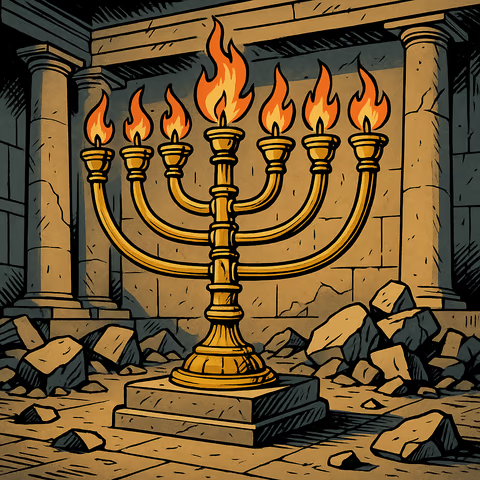 Timeline of the Maccabeean Period
Timeline of the Maccabeean Period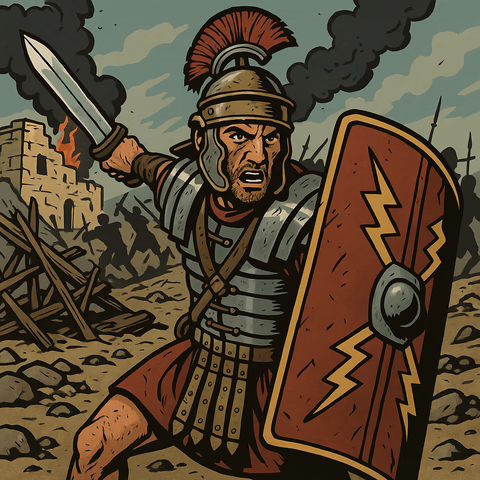 Timeline of the Jewish-Roman Wars
Timeline of the Jewish-Roman Wars Timeline of Jesus' Death and Resurrection
Timeline of Jesus' Death and Resurrection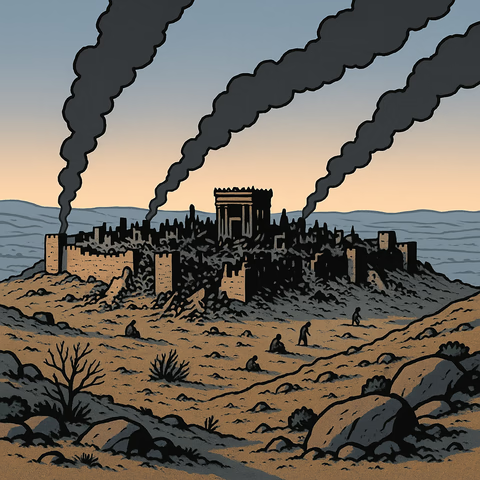 Timeline of the Babylonian Exile and Restoration
Timeline of the Babylonian Exile and Restoration
Timelines: Doctrines
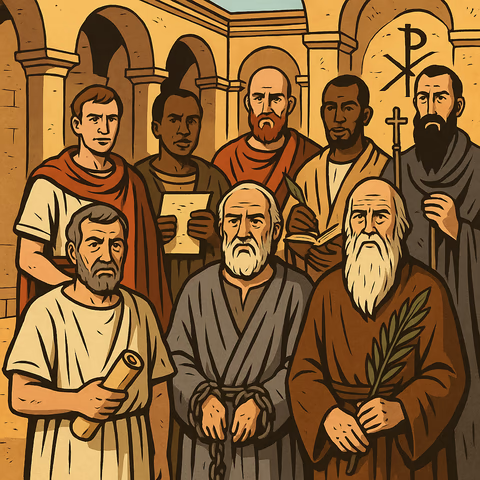 Timeline of Church Fathers and their Doctrines
Timeline of Church Fathers and their Doctrines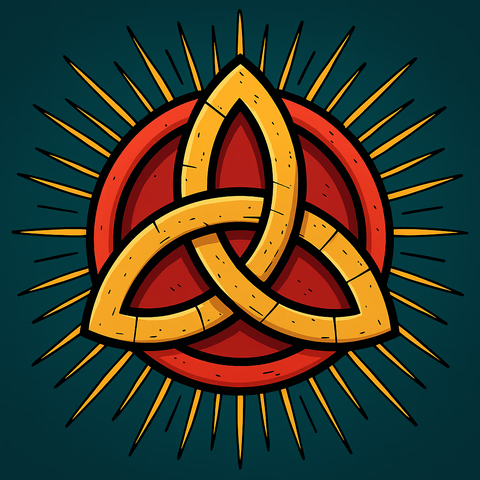 Timeline of the Trinity Doctrine
Timeline of the Trinity Doctrine Timeline of Afterlife Doctrines
Timeline of Afterlife Doctrines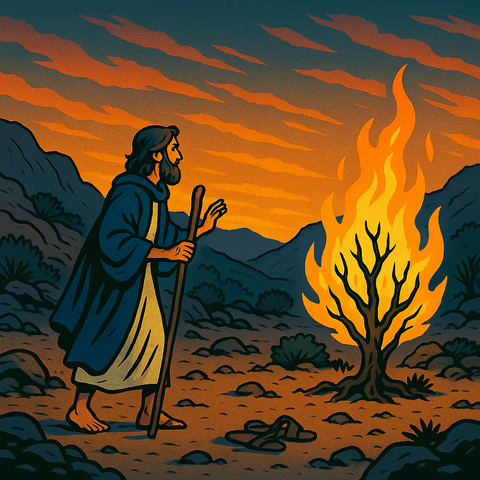 Timeline of God's Name
Timeline of God's Name
Timelines: Miscellaneous
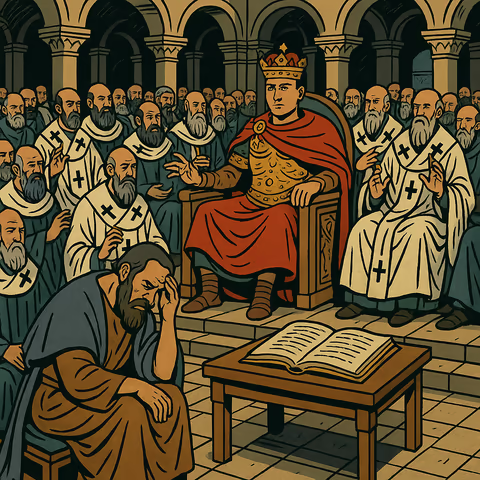 Timeline of Bible Canon Formation
Timeline of Bible Canon Formation Timeline of Bible Translation
Timeline of Bible Translation Timeline of Church Schisms, Gnostics, and Sects
Timeline of Church Schisms, Gnostics, and Sects Timeline of Failed Apocalyptic Predictions
Timeline of Failed Apocalyptic Predictions
Also see our Articles index and our About section.